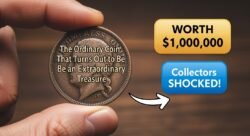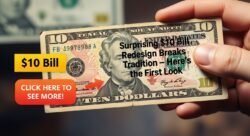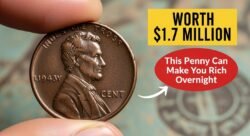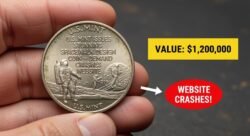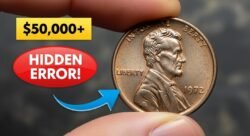1955 Doubled Die Penny: Have you ever wondered how an ordinary penny could become one of the most sought-after coins in American history? I’m fascinated by the story of the 1955 Doubled Die Lincoln Penny, a coin that started as a simple minting error but evolved into a controversial numismatic legend. What makes this particular penny so special isn’t just its rarity—it’s the perfect storm of circumstances surrounding its creation, discovery, and the debates it sparked among collectors. When you look at numismatic history, few coins have generated as much excitement and controversy as this humble one-cent piece with its distinctive doubling error.
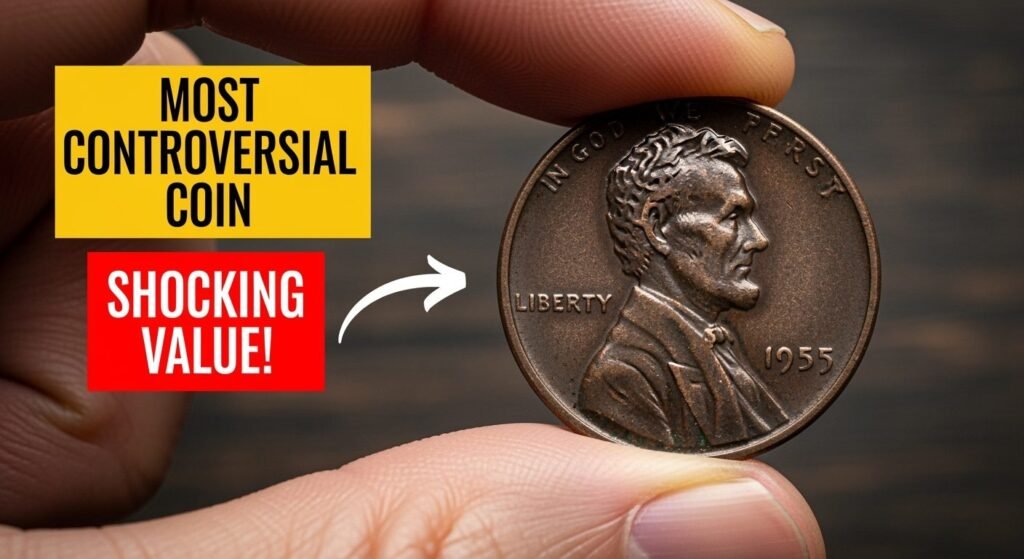
What Makes the 1955 Doubled Die Penny Unique
The 1955 Doubled Die Penny resulted from a manufacturing error at the Philadelphia Mint. During the die-making process, the hub imprinted the design onto the die multiple times, but with a slight rotation between impressions. This created a noticeable doubling effect, particularly visible in the date, the word “LIBERTY,” and the motto “IN GOD WE TRUST.” Unlike other minor doubling errors, this one was dramatic and easily visible to the naked eye. What’s particularly interesting is that mint officials discovered the error during production but allowed the coins to be released anyway, considering it too costly to destroy them. Approximately 20,000-24,000 of these error pennies entered circulation before the flawed die was retired.
Why This Penny Generated Controversy
The controversy surrounding the 1955 Doubled Die Penny stems from several factors. First, there’s the mint’s decision to knowingly release flawed currency—a practice that raised eyebrows among numismatists and government oversight committees alike. Second, as the coin’s value skyrocketed, counterfeits began flooding the market. This led to heated debates about authentication methods and created a subset of collectors who specialized in identifying genuine 1955 Doubled Die Pennies from sophisticated fakes. Additionally, the coin became a flashpoint in discussions about what constitutes value in numismatics—is it rarity, historical significance, or simply collector demand? The 1955 Doubled Die Penny challenged conventional wisdom on all these fronts.
How to Identify an Authentic 1955 Doubled Die Penny
Identifying a genuine 1955 Doubled Die Penny requires careful examination. The doubling should be prominent and consistent with known examples—particularly noticeable in the date, “LIBERTY,” and “IN GOD WE TRUST.” The doubling appears as a distinct separation of design elements, not just thickness or mushiness in the strike. Weight and composition should match standard 1955 pennies: 3.11 grams of 95% copper. I always recommend using a magnifying glass of at least 5x power to examine suspected specimens. Be wary of artificially aged modern pennies or altered dates from other years. The most reliable authentication comes from professional grading services like PCGS or NGC, which have extensive experience with this specific error.
- Look for strong doubling in the date and inscriptions
- Check that the coin weighs approximately 3.11 grams
- Examine the coin under magnification for consistent doubling patterns
- Consider professional authentication for valuable specimens
When the Market Value Exploded
The 1955 Doubled Die Penny didn’t immediately command premium prices. In the late 1950s, these coins traded for just a few dollars above face value. By the 1970s, however, as organized coin collecting grew in popularity, values began climbing steadily. The real explosion came in the 1980s and 1990s, when mainstream media coverage and increased collector education brought this error coin to wider attention. Today, even in circulated condition, a genuine 1955 Doubled Die Penny can command thousands of dollars, while pristine uncirculated examples have sold for over $100,000 at auction. This dramatic value increase has only fueled the controversy surrounding the coin, as debates about condition grading, authentication, and fair market value continue to divide the numismatic community.
The Famous Suburban Find
One of the most legendary stories involving the 1955 Doubled Die Penny occurred in 1957 when a bank teller in Massachusetts noticed something odd about several pennies in her cash drawer. Having read about the error in a coin collecting newsletter, she set aside 10 examples before they entered general circulation. Rather than selling them immediately, she stored them in a safe deposit box, only revealing her find to the numismatic community decades later in the 1980s. When finally authenticated and sold, her foresight resulted in a windfall of over $50,000—an incredible return on a 10-cent investment. This discovery reinforced the allure of the 1955 Doubled Die Penny and the possibility that undiscovered specimens might still be hiding in penny jars and collections across America.

